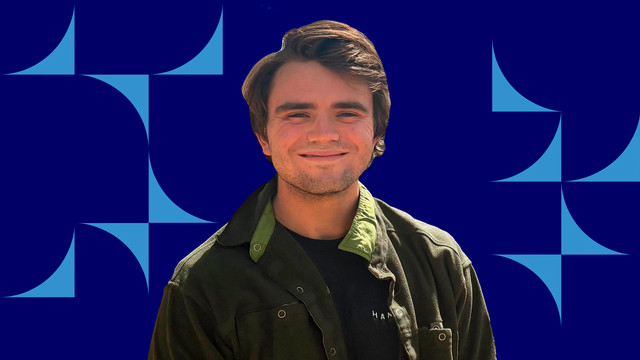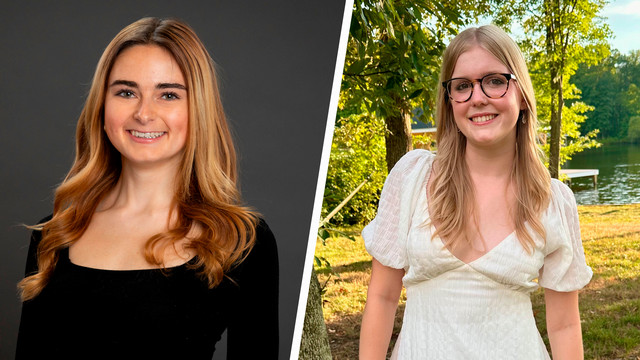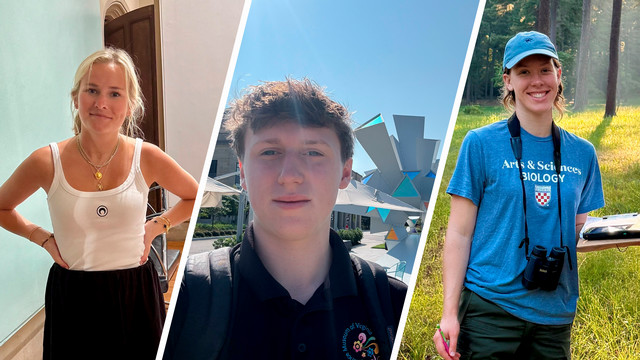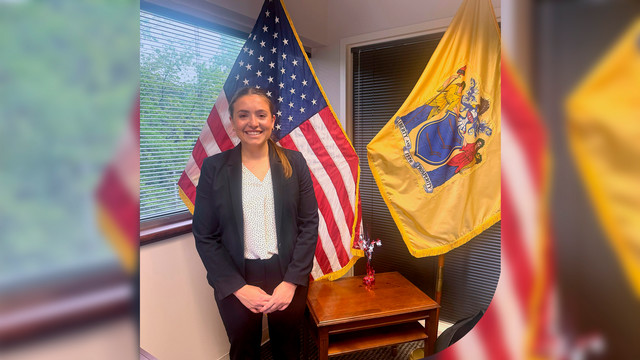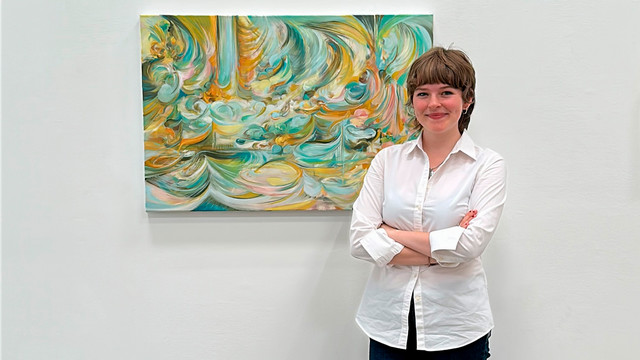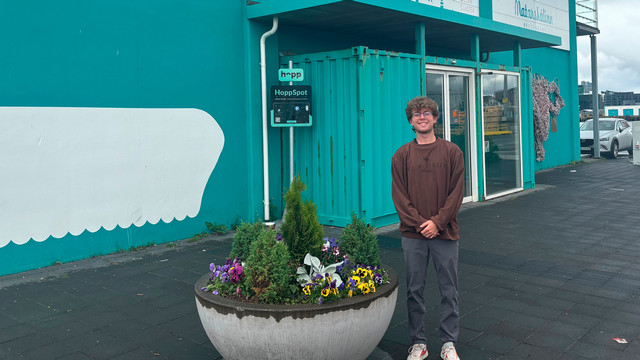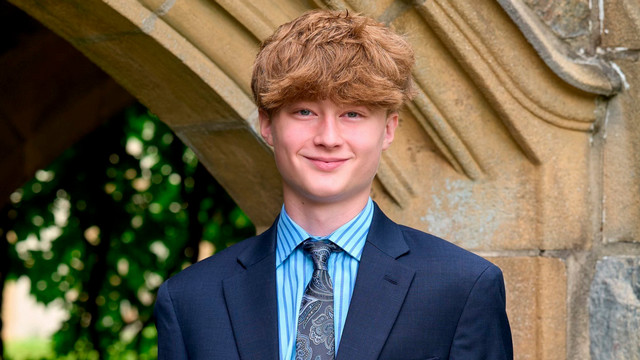
Richmond student’s research leads him to tombs in Italy
Student Experience
Sophomore Franklin Young used the summer months to explore art history — a subject he’s curious about, but not sure he wants to major in. He wanted that curiosity to organically unfurl possibilities. That journey took him from a classroom at Richmond to studying the evolution of funerary art during the Renaissance to walking the streets of Florence and Rome in search of monuments created by the Italian artist Michelangelo.
Young said he has always been interested in art history, but didn’t have many opportunities to study the subject in high school. This past spring, he signed up for Archaeology of Death taught by Elizabeth Baughan, associate professor of classics and archaeology and chair of the department of classical studies. “I was surprised by how interesting and compelling I found the class, and how much it intersected with art history,” he said.
Young decided he wanted to take the class a step further and applied for summer research funding to study funerary art during the Renaissance period, with guidance from Baughan and Elena Calvillo, associate professor of art history and co-chair of the department of art and art history.
He quickly realized his chosen topic was too broad and spent the early weeks of summer reading about different funerary statues and commissions, trying to narrow his focus. The book Tomb Sculpture: Four Lectures on its Changing Aspects from Ancient Egypt to Bernini provided a crucial baseline. “I would find little details or mentions of specific monuments and think that it was interesting. So, I sought out more sources about those details and eventually homed in on what I wanted to focus on,” Young said.
Narrowing down the choices
In weekly meetings with Baughan and Calvillo, they helped him continue his probing as they recommended new books, lectures, and other sources.
His research eventually led him to Michelangelo. Young found it interesting that the artist often left his work unfinished and connected with the Neoplatonic philosophy that sculptures are souls trapped in marble, waiting to be set free.
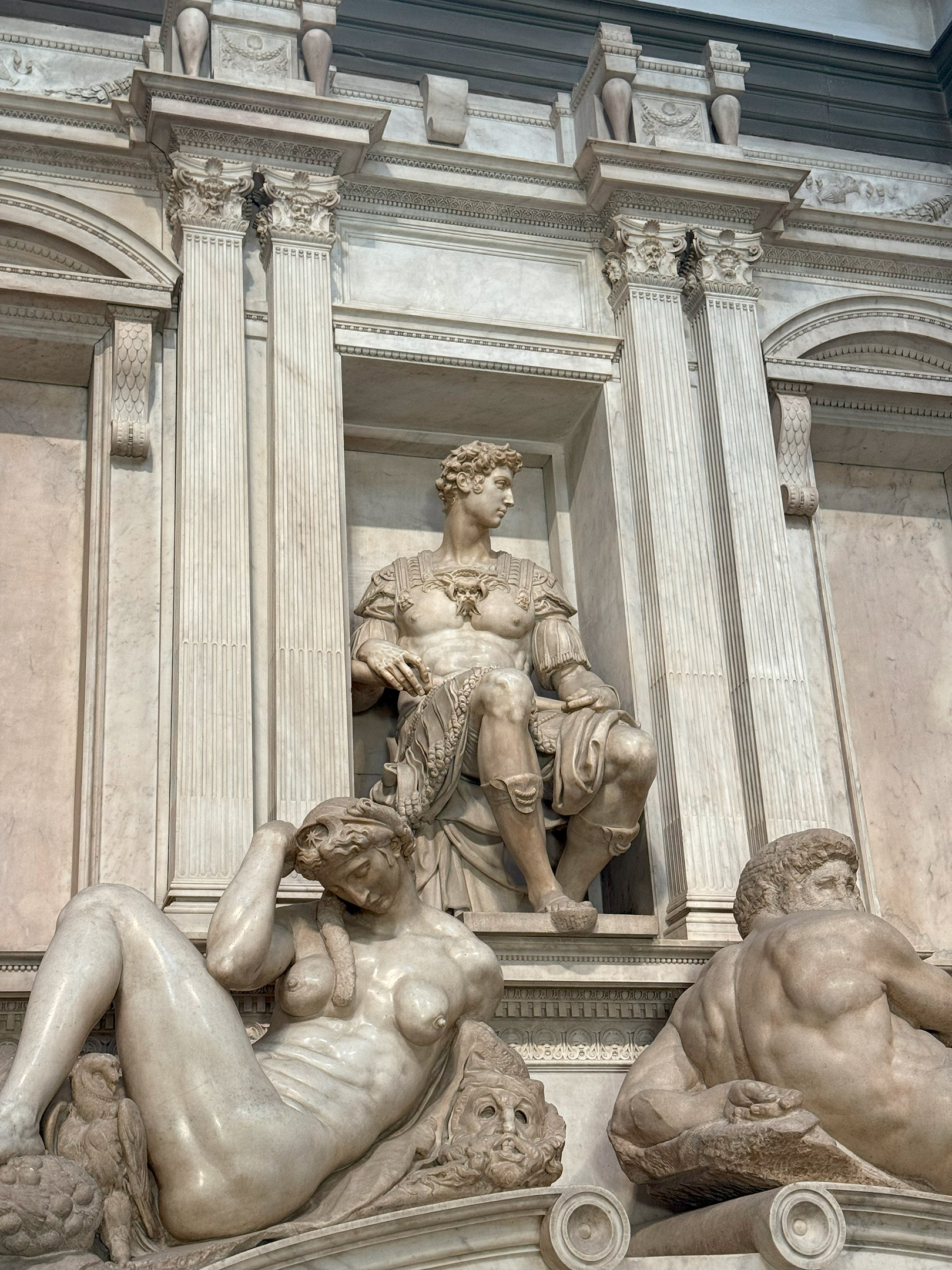
“I thought that was really poetic,” Young said. “It was also interesting to see Michelangelo grapple with his own mortality while making these funerary monuments for other people. That struggle was more pronounced with him than any other artist I read about.”
By August, Young was ready to take his research abroad and see the works of Michelangelo firsthand. He spent a week in Florence and Rome, where he visited the Medici Chapels, which house Michelangelo’s monuments of the Medici family. He also sought out sculptures commissioned by Pope Julius II, intended for his tomb, but ultimately left unfinished.
Seeing the works in person brought a layered nuance to Young’s summer of research. The books he read included floor plans, diagrams, and descriptions of finishes, but couldn’t fully convey the details and sense of space.
“I read a lot about how the Medici Chapels were used as a liturgical space and the layout contributed to that, but it was hard to grasp that from a diagram,” he said.
“I also read a book that described one marble statue as having the feel of sweaty bedclothes, which you can see in the finish of the marble. Looking at a photo, I had to take their word for it, but when I was there, I could totally understand what they meant.”
Young’s research also prepared him to seek out small details, like a tiny owl statue in the Medici Chapel that was mentioned in nearly every book and article he read but was easy to overlook in the space.
Back in the classroom
With his summer of research behind him, Young is returning to Baughan’s classroom this fall after signing up for her Roman art and archaeology class. He’s also planning to keep taking art history classes and even minor in the subject, along with his potential majors in psychology and English.
“Research was a great way for me to explore one of my interests without completely committing to it,” Young said. “It definitely helps to have this experience on my resume if I want to pursue more opportunities in the art history field. Regardless of the subject or the discipline, I picked up skills that can be applied almost universally.”

